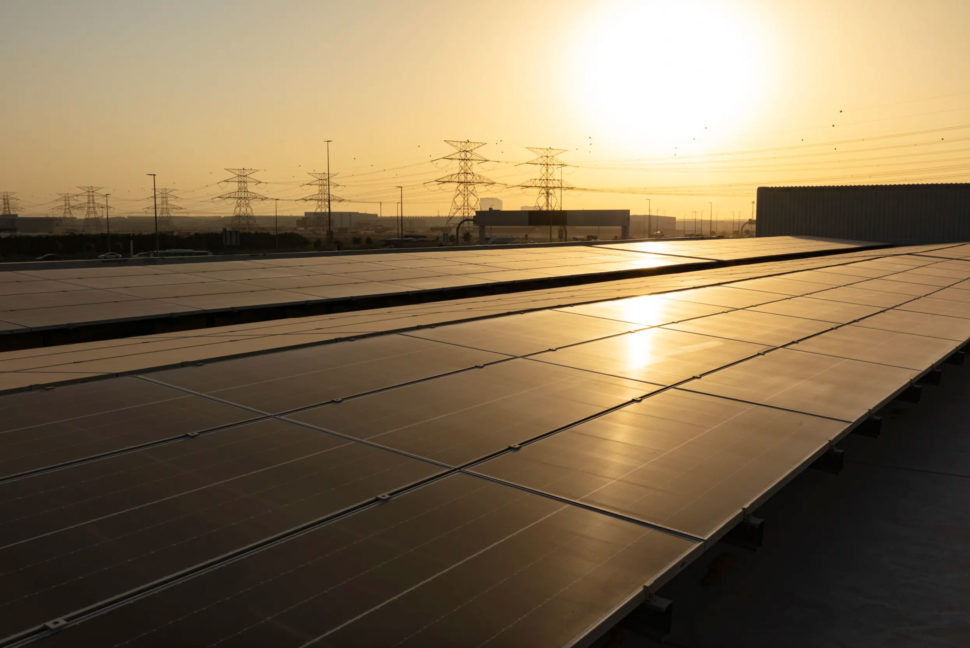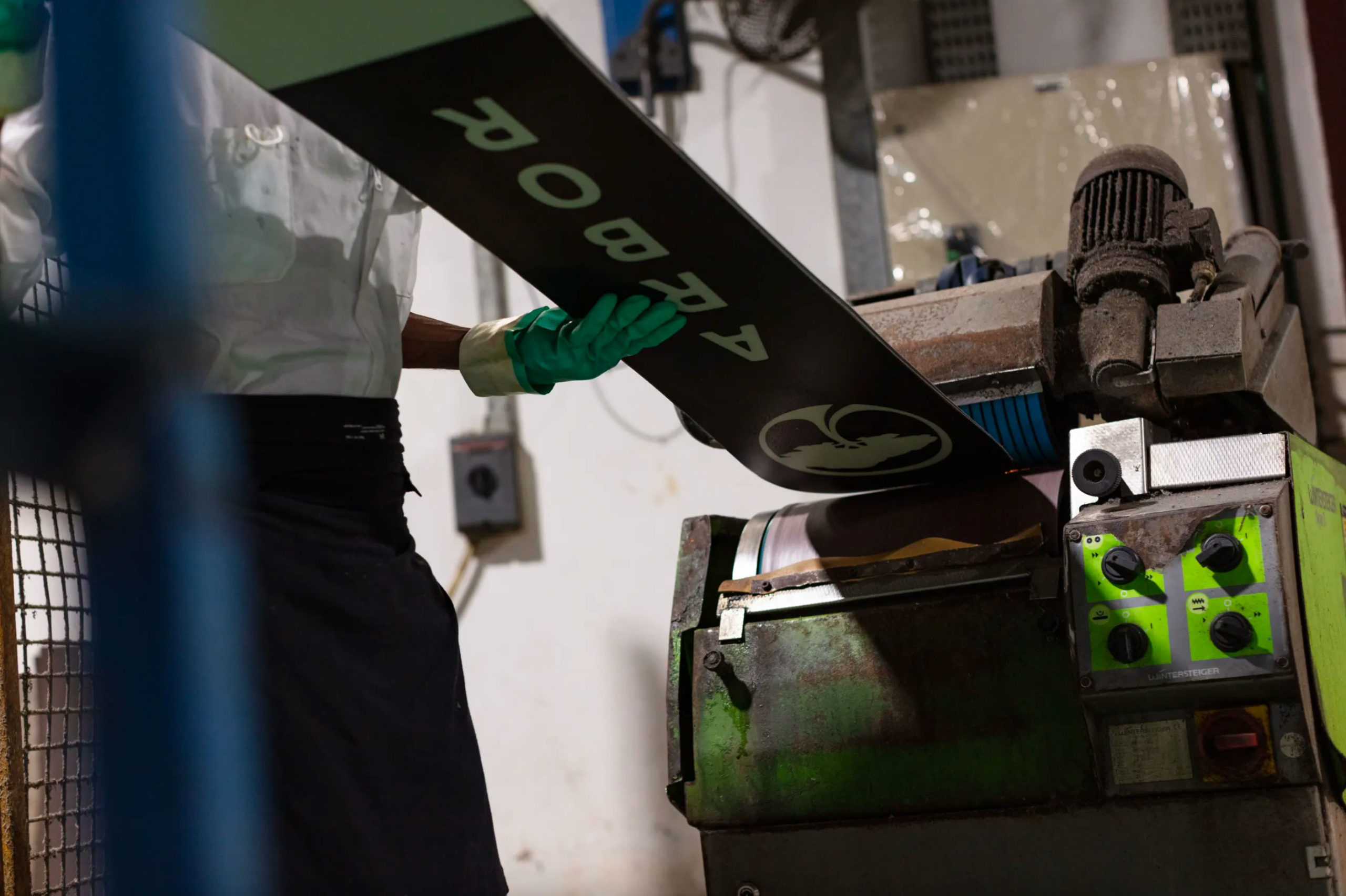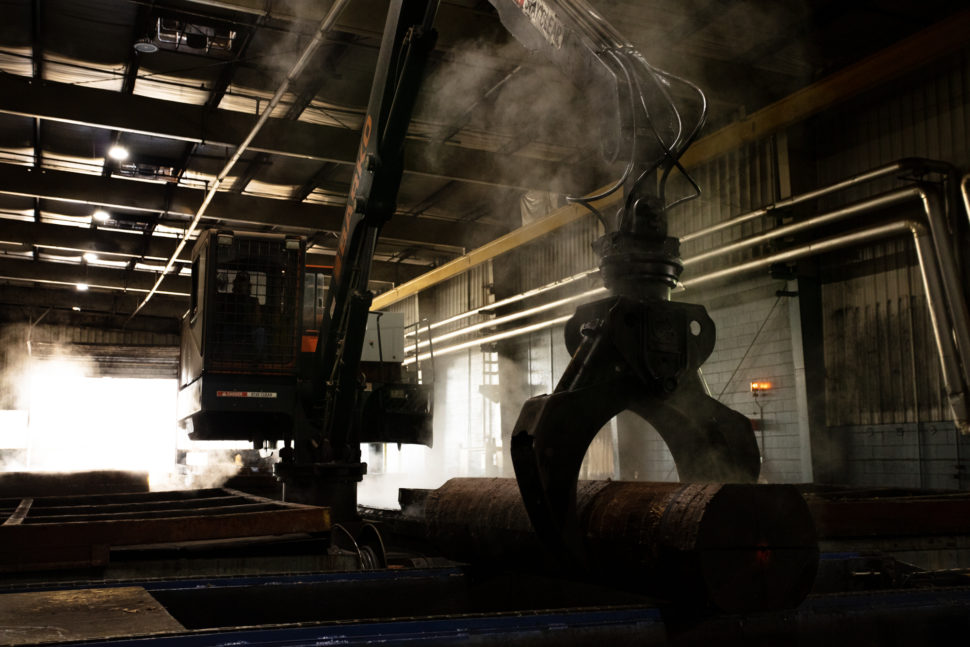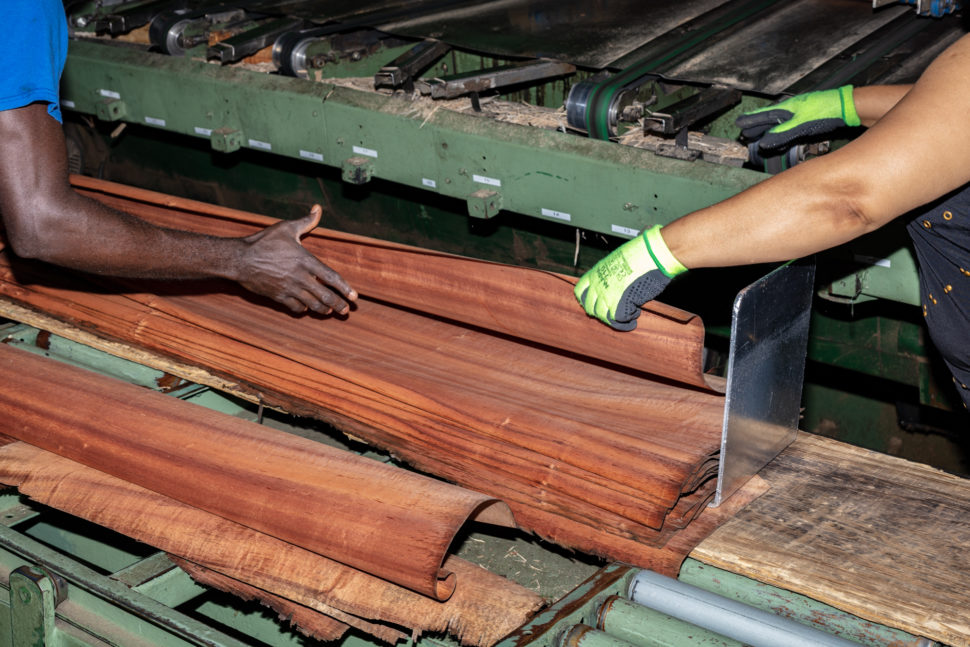Products You May Like
It’s safe to say that most of our readers, alongside the snowboard community at large, understand central concepts of sustainability. The core theme of sustainability is concentrated around meeting our needs without considerable exploitation to our future resources. Now, when that comes to consumerism, this all becomes a bit nuanced. The snowboard industry is easy to critique on the sustainability front. The consumer side of snowboarding sees an alarming amount of non-recyclable waste, packaging, abandoned product, and capital-driven marketing to keep the wheels turning. Snowboarding has been turning out more eco-minded options over the years, and there are a handful of brands leading the charge in sustainability without defaulting to a greenwashed product. Conceptually, it is easy to attack, but if we examine the very industry we participate in, it’s time to take a deeper look at what’s behind the scenes, and in Arbor Collective’s case, what always has been.
On the hypothetical spectrum of keeping snowboarding sustainable, there’s a sense of personal responsibility. Reduce, reuse, recycle, knit your beanie, thrift your kit, pocket your cigarette butts, carpool with the homies. On the opposite side is advocating policy change. Radical grassroots action that works towards climate justice in a broad scope. Somewhere in the middle of this is a blend of personal responsibility and policy change under the air of brand responsibility. What brands are doing behind the scenes to push product out the factory doors is integral to the longevity of our sport. Arbor has focused on three primary pillars of sustainability to ensure that their products hold a sense of ecological integrity–a staple of their ideology. These pillars are their Powerply topsheets, Mindfully Crafted products, and their Returning Roots reforestation program.
Sustainability has been at the forefront of Arbor’s brand mission since day one. They launched in 1995 after co-founders Bob Carlson and Chris Jensen decided to infuse sustainably harvested wood into the snowboard industry. They worked hard in a Riverside, CA factory to produce wood veneers that would be later become definitive of the Arbor aesthetic.
“We launched Arbor to focus on sustainably in the production of snowboard products,” explains Carlson. “We were the first action sports brand founded to do so, believing then, as we do now, that those of us to rely on the natural world to pursue our passions, should help lead the efforts to protect the planet. For us, that has always included the materials and processes we use to produce our products, and a commitment to giving back a portion of sales to environmental restoration and conservation.”
Bob and Chris recognized that sustainability was vital to the survival of winter sports before most and approached the industry with a cradle-to-grave dedication to their craft. They have always been driven by creating a product that combines forward-thinking, traditional craftsmanship, and does this through sustainable materials and production. An ethos that once was almost the death of the brand, is the same ethos that keeps Arbor thriving today.
Arbor has always been unapologetically unique, and their real wood topsheets are part of that longstanding equation. Arbor never sought out the wood to create their vision, they were already working with it. Chris Jensen came into an opportunity to sell sustainably harvested Hawaiian koa wood in the early 90s. The alluring part of the whole sales pitch was that a portion of the sales would be returned to a reforestation project that sustains the regeneration of the koa wood. Chris convinced Bob Carlson to join his sales team, and in a short time, the koa wood became the topsheet material of the first line of Arbor Snowboards.
The real wood topsheets that remain the backbone of the Arbor aesthetic are called Powerply. Powerply topsheets not only produce a particular visual aesthetic for the board, but they contribute to performance and durability alongside a reduced environmental footprint. “By adding the Powerply’s natural, organic, biodegradable fibers to our boards,” explains Calrson, “we are able to reduce the amount of man-made fiber and resin used.” The endless structural properties of various wood types are used strategically in snowboard cores, and Arbor has been able to apply these properties in their Powerply topsheets as well. According to Arbor, the Powerply acts like an additional composite layer in the snowboard. The natural fibers significantly reduce the weight of the boards, while simultaneously reducing the reliance on petroleum resins, man-made fibers, and toxic solvents.
Arbor has partnered with Ohio-based and family-run M. Bohlke Veneer Corporation. Bohlke has an admirable knowledge base of wood, its intrinsic properties, and how to use it sustainably. They are committed to turning raw material into fully processed wood veneer with simply water and electricity, making the Powerply process as environmentally sustainable as possible. The majority of wood that is produced in the Bohlke factory is harvested from within 500 miles of the factory. Bohlke has direct connections with both Arbor and the landowners they work with, making the production of Arbor Powerply parallel to the overall Arbor mission.

Once Powerply topsheets are processed with Bohlke, they are sent directly to the SWS factory in Dubai where Arbor snowboards undergo the second pillar of sustainability, as they are Mindfully Crafted. Arbor moved to the SWS factory because of their longstanding relationship with the managing team behind it. Some of the team at SWS has been with Arbor since the beginning, and to stick with the cradle-to-grave mentality that drives Arbor’s sustainability efforts, it was the right choice to make. Carlson is proud that Arbor snowboards are produced in a 100% solar powered facility. Other key sustainability efforts found in the SWS factory are that 50% of raw materials come from a 50km radius of the factory. The production process applies the use of eco plastics, flex fiber, bio resin, Forest Stewardship Council (FSC) approved wood cores, recycled steel edges, and often recycled sidewalls. Using local and sustainable materials with an extremely skilled factory workforce ensures that Arbor’s vision will continue to grow and adapt with the needs of future generations.
The third pillar of sustainability that supports Arbor’s environmental ethos is the Returning Roots program. This program has evolved with the brand for over 25 years and is dedicated to the koa forests in Hawaii that produced the first real wood topsheets in 1995. Koa is said to be a cornerstone species that is endemic to Hawaii, so Arbor is committed to putting a portion of all proceeds to groups that protect and restore forests, namely the Hawaiian Legacy Reforestation Initiative. This reforestation project methodically replants koa trees along with diverse understory plants that mimic a naturally occurring forest. The forest currently sees about 75,000-80,000 trees planted annually, which contributes to the protection of the koa trees and the restoration of its use in fine art and craft where the wood can be enjoyed for generations. The program has seen a 90% survival rate in initial planting and 98-99% survival rate in all replanted areas.
The Arbor story is a charming one, and not because they have grown into success while overcoming the highs and lows of the industry. It is charming because as a self-identified environmentalist, Bob Carlson has been able to implement an ahead-of-its-time approach to snowboarding whether it was core or not. Arbor’s dedication to drastically minimizing their impact on the planet has always been the framework of their entire brand, and it’s easy to trust that they will clutch to that from cradle to grave.


